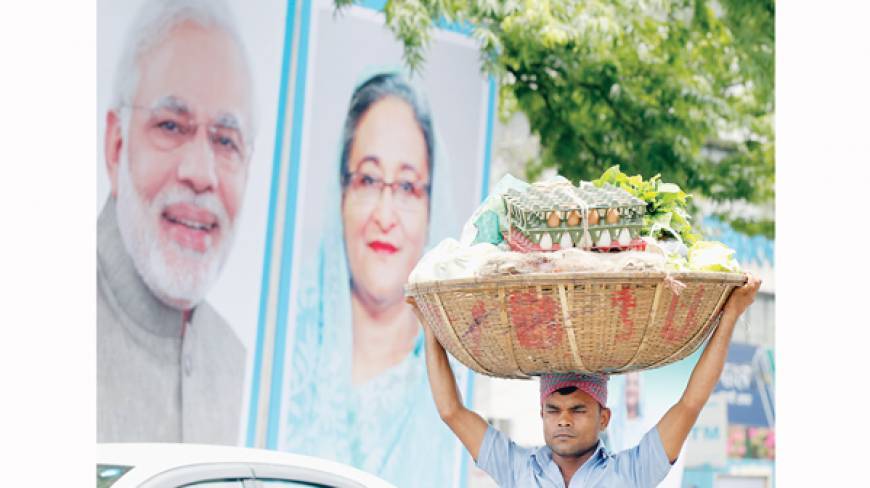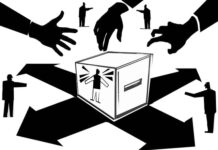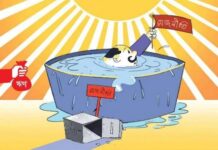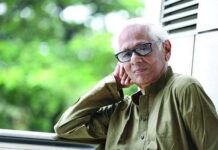Nazim Farhan Choudhury
The trillion dollar question is, what does this trip end up doing for Bangladesh in the long run? As it stands now,it gives hope, but not much more
What a charmer he was! Even the Begum broke her self-prescribed protocol and shook hands! Prime Minister Modi is the ultimate political operator and a PR genius. And he pulled out all the stops for his recent visit to Bangladesh. Starting from his post to the twitterati, he hit the high notes, made the references that need to be made, and left everyone mesmerised.
“Not just side by side but together.” That was what everyone wanted to hear and that’s what everyone got. During his speech organised by Dhaka University, he even gave a nod out to the cricket team, Noakhali, women’s advancements, Aarong, and our progress on MDG goals (and diplomatically kept mum on democracy or micro-credit). The only thing missing was the selfie, à la the one in China with Premier Li.
This was so unlike a similar visit by the then PM, Manmohan Singh. We were the ones who had gone all out with the charm offensive at that time but were stood up at the altar. Five years on, many of the promises from that trip are left unanswered. Many of the desires left unsatisfied. The question is, will it be the same this time around? Can and will PM Modi walk the walk?
Many of the realities of the two visits were in stark contrast. PM Singh tried to manage a herd of cats, while PM Modi is the Pied Piper of Delhi. The UPA government that Singh led was on its death bed without the political capital, or the will, to take the big steps that needed to be taken to reciprocate the gestures that Sheikh Hasina’s government went out on a political limb to provide.
With a super majority in the Lok Sabha, the BJP government can push through many of the actionable points raised during the visit. This, in addition to Modi’s “neighbourhood first” policy, presents a genuine possibility of finding solutions to some of the long outstanding issues.
There is a paradigm shift happening in India’s approach to foreign policy. India wants to be the champion of the “poor.” During his speech in Dhaka, PM Modi spoke openly of his desire for a permanent seat on the UN security council. This can’t happen without the neighbours signing on. India needs, as he noted, not to be looked at as an expansionist force, but rather a co-operative one. Only with prosperity can the region move forward enough to influence world policy. Almost 2 billion people live in South Asia. India wants to be their voice on the world stage.
Another tectonic shift happening is in the bedrock of Indo-Bangla relations. The very anchors of the legacy on which the relationship rests is now different. The decade-old ties between Congress and Bangladeshi politicians (especially Awami League) are no longer there. New relationships need to be fostered. The age of old school vote bank politics of CPI(M) in West Bengal, too, has given way to a turf fight between Mamata Banerjee’s Trinamol Congress and BJP.
One of the keys to Writer’s Building in Kolkata is in the hands of Bangladeshi migrant voters. This is coupled with a shift in the basic essence of the Indian bureaucracy. While at one time, graduates of elite schools like St Stephen’s filled the corridors of North and South Block; this has now been more democratised.
Long gone are the Bengali babus and UPites who called the shots. This is more and more being dominated by bureaucrats from South India and their political and business masters from Gujarat and Maharashtra. These new faces do not have the same emotional ties with Sonar Bangla that the Pranab Mukherjees of the world did.
This is an opportunity for us in Bangladesh. We need to engage vigorously with the new order. We have the scope to rewrite decades of old prejudices and held beliefs. We need to convert that “big brother” to “elder brother” to “best-friend.” This means fostering relationships with not only Delhi, but with a wider range of stakeholders and opinion formers. We need to go on a PR and lobbying offensive of our own. Hearts and minds of media, businesses, and the opinionated youth need to be won.
The trillion dollar question is: What does this trip end up doing for Bangladesh in the long run? As it stands now, it gives hope, but not much more. Much hullabaloo has been made about the 22 or so deals and agreements signed. Impressive, but one needs to ask the question about who these “deals” benefit.
Let’s look at a few, the biggest being the LBA. Aren’t we being given something agreed upon almost half a century ago? And doesn’t it benefit Indians in enclaves in Bangladesh as it does vice versa?
And what about the $5bn investment in the power sector? Yes, it does help to generate electricity in Bangladesh, but didn’t PM Modi’s top two financiers just get a non-competitive deal handed to them? Yes, we will talk about the direct sea-link between the two countries. But given the lopsided balance of trade, isn’t that just logical that more goods will be flowing into Bangladesh on those ships (mostly run by Indian shipping lines) than out? The “Blue economy?”
Can it be another way for Indian companies to reap benefits from the area that they have been deprived of due to redrawing of maritime boundaries?
And last, but in no way the least, isn’t the Kolkata-Dhaka-Agartala bus, or the transport protocol in essence the same thing as “transit” without calling it so? Oh yes, we did get a soft loan of $2bn — to fix infrastructure for the aforementioned deals, making it easier to import Indian electricity and to build special economic zones for Indian companies.
I know the previous paragraph will have many readers labelling me as “anti-India,” but to clarify, I am not saying these are bad things we have agreed to, but rather, we should go deeper than the surface. And that India needs to do more.
We didn’t hear much about SAARC this trip as we heard about BBIN (Bangladesh-Bhutan-India-Nepal). Are we being put in the same pedestal as Bhutan or Nepal? Life is good in those countries if one sees the “borderless” access that Indian companies have, or how the Indian Rupee is a parallel currency.
India of the past would have thought that was a good thing. But with less then 30 million citizens in those countries, Bangladesh will be much bigger to swallow and even more difficult to digest. No amount of Hajmola will cure the ache an unstable or non-prosperous Bangladesh would give!
Prime Minister Modi, if he is to be believed, understands this. Now he has to start delivering on the promises. Teesta, Farakka, easy visa process, non-tariff barriers, a tight check on border killings, access to Bangladeshi TV, and promoting of Bangladeshi interest in the world stage, are only some of the low-hanging fruit. Let’s see how many of those are served up to us. And let’s see if there is any concrete change of attitude towards the democratic process in Bangladesh.
Only then will Prime Minister Modi conquer Bangladesh.
Source: Dhaka Tribune











Modi’s visit has made us Bangladeshis appear no more than a bunch of spineless self-seeking jokers – while Hasina laid out the red carpet and inked on numerous lopsided agreements to ensure permanency of her tenure, by going extra length to make sure that Modi meets Khaleda and then rejoiced that he actually did and also that since his visit would not engage in objective analysis of the deals made and concessions extracted, a norm for any opposition party, has rendered the much proclaimed nationalist party, BNP look more like the proverbial ‘chagoler tritio bachcha’, dancing at the prospect that Modi would help them to go to power one day!! Selfish reasons have driven both of our major political parties to make Modi appear a de facto emperor with power to appoint viceroys and dictate the terms of exchange between the two countries.
Only a people uprising can alter this equation. Sadly, such a prospect does seem like waiting around the corner. But then you never know as Faiz Ahmed Faiz’s famous gazal reminds,”Hum dekhenge….” – I shall see…